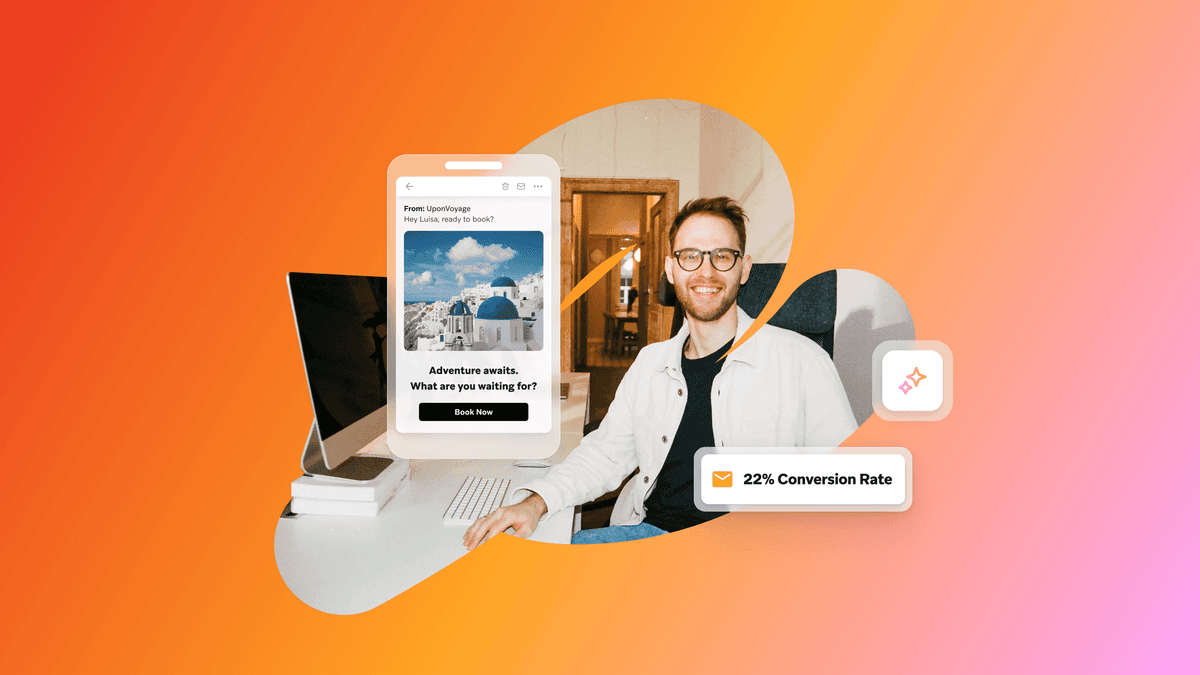Stop Churn Before It Happens: Embracing a Two-Pronged Approach to Boosting Retention
Published on April 11, 2024/Last edited on April 11, 2024/4 min read


Team Braze
In a perfect world, you’d never have to worry about your customers churning. But that’s not reality. Even exceptional brands staffed by gifted customer engagement teams will see some of their audience depart as time passes. The trick is to use the tools and tactics at your disposal to minimize that outflow and to hold onto individual customers who have the potential to grow into long-term, loyal users.
Much of that work centers on the early parts of the customer journey—and for good reason. After all, creating a strong onboarding experience, building trust by priming for permissions, and providing customers with a relevant, value-add experience from the beginning of their time with your brand are some of the most impactful ways of keeping the average consumer engaged and loyal.
But what if you could look beyond the average customer and instead build out targeted flows for users based on how likely they were to churn? By speaking to users 1:1, you could potentially hold onto more customers while sending fewer messages and driving more impact.
So what does that look like in practice? Let’s work to better understand the warning signs of customer churn before exploring how to tackle it.
5 key warning signs of churn
When it comes to assessing which customers are likely to stick around and which ones might be flight risks, there’s no foolproof way to tell. That said, there are several common behaviors that are worth keeping an eye on, including:
- Customers stop engaging with messaging channels like SMS, email, WhatsApp, and push as often as they once did
- Customers abandon their shopping carts more frequently
- There are longer periods between when customers open your app, visit your website, use your services, visit you in person, use your loyalty program, or make purchases
- Customers uninstall your app
- Customers unsubscribe or opt out of receiving notifications from your company
As a general rule, seeing customers breaking established positive patterns (i.e. visiting your website every day, ordering from you each month) or choosing to reduce their connection with your brand (i.e. by unsubscribing from messages or uninstalling an app) should be treated as potential warning signs. Not every person is necessarily signaling that they intend to churn—sometimes customers unsubscribing from your emails is actually a sign that you’re just sending too many emails—but being vigilant will give you more opportunities to address issues when they do arise.
Proactively reducing churn: A two-pronged approach
Once you understand what churn looks like as it’s happening, it’s time to get ahead of it and do more to hold onto customers before the relationship truly lapses. We’ve put together a two-part approach that can help you maximize your retention outcomes and drive stronger business outcomes.
#1: Use predictive AI to identify users at risk and intervene before it’s too late

Thanks to advances in machine learning (ML), brands now have the tools to detect behavioral patterns correlated with churn at scale, use these correlations to predict the likelihood that targeted users will depart, and pinpoint behaviors and demographics associated with churn risk.
For instance, brands that use Braze Predictive Churn can identify key behaviors linked with user churn—such as not using the company’s app or not making a purchase within a certain timeframe. That makes it possible for marketers to either identify the correlations associated with churn, then target members of your audience with those traits, or use AI to identify and segment individuals who are most likely to churn (based on one or multiple churn-associated characteristics) to support targeted messaging. That opens up major new opportunities to retain high-risk customers.
#2: Build a cross-channel feedback loop to improve the customer experience

For instance, when someone uninstalls an app, you can trigger a follow-up via email to ask why. If someone opts out of push notifications but continues to use your app, you can check in via in-app messaging to learn how or why their preferences have changed. This cross-channel approach can help improve things for customers on the channels where they’re still engaging and may potentially uncover larger trends or quality and relevance issues within certain channels.
Final Thoughts
Looking to deepen your knowledge of retention and explore more ways to tighten up your customer engagement efforts and create more loyal customers over time? Check out our exclusive retention guide for a look at how to build a sustainable retention strategy.
Related Tags
Be Absolutely Engaging.™
Sign up for regular updates from Braze.
Related Content
View the Blog
Data-Driven Personalization Heralds a New Era of eCommerce with Braze and Shopify

Ankit Shah

Email campaign best practices: The ultimate guide to being a successful email marketer

Team Braze

April 2025 Bonfire Marketer of the Month: Neighborly’s Kayla Upton
